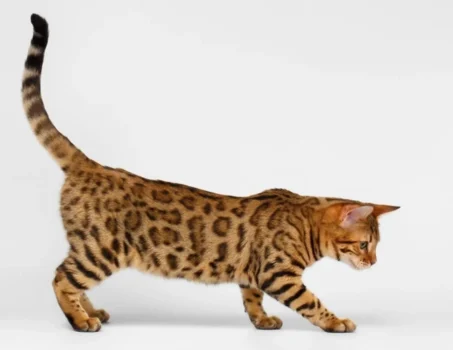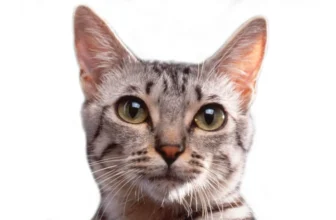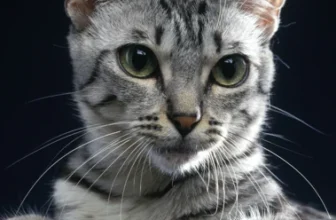It’s that time of the year again – the California Spangled Cat breeding season is fast approaching. As a responsible cat owner, ensuring your feline friend is ready for breeding is paramount to producing healthy offspring. But where do you start? What should you expect? And how do you prepare your cat for this important time? Don’t fret, we’ve got you covered! In this article, we’ll guide you through the ins and outs of preparing your California Spangled Cat for the breeding season with tips and tricks that will help you and your cat have a successful breeding process. So, let’s dive in and get your cat ready for this exciting phase of their life.
Understanding the Breeding Season for California Spangled Cats
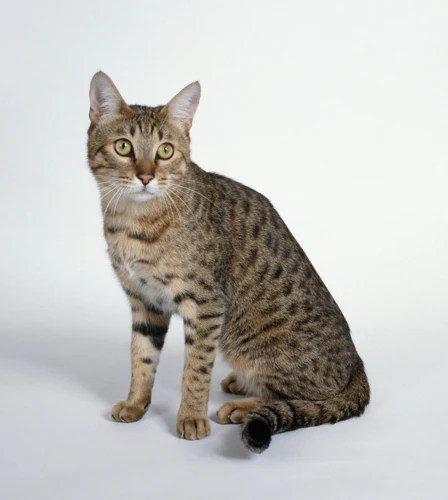
As a California Spangled cat owner, it is important to understand the breeding season of your feline companion. A better understanding will help you to prepare for this exciting time and make sure your cat stays healthy and happy. Breeding season can be a confusing and overwhelming time if you are not prepared, but with the right knowledge, you can make sure everything goes smoothly. In this section, we will cover the timeline of the breeding season and what you can expect during this time. So, let’s dive in and learn more about the breeding season for your California Spangled cat.
When is Breeding Season?
Breeding season for California Spangled cats usually starts in mid-winter and lasts through early spring. More precisely, it can start in November and last until the end of March. During this period, the cali-spangled-cat is in heat and able to mate with a suitable partner. It’s important to note that not all cats will have the same breeding season, and some may go into heat later or earlier than others.
Additionally, there are several factors that may affect the timing of breeding season for your cat. One of the most important ones is the optimal-breeding-age-california-spangled-cat. It’s recommended that you breed your cat for the first time when they are at least 18 months old and have reached their full maturation. Breeding your cat too early could result in health issues for both the mother and kittens.
Another factor that may influence the timing of breeding season is the genetics-california-spangled-cats. Some cats are naturally more inclined to mate during certain times of the year and may be more fertile during these periods. Additionally, environmental factors such as temperature and daylight can also play a role in when a cat goes into heat.
Keeping track of your cat’s heat cycle is essential for planning the breeding season. If you are hoping to breed your cat, make sure to mark the start and end of their heat cycles in a california-spangled-cat-birthing and mating journal. This will help you to predict when the next breeding season will occur and make the necessary preparations.
It’s also important to note that not every mating attempt will be successful, and /ca-spangled-cat-infertility/ is a common issue among cats. However, there are several /5-signs-successful-mating-california-spangled-cats/ to look for to ensure that the mating was successful and that your cat is pregnant.
What to Expect During Breeding Season
Breeding season is a critical period for those who want their California Spangled cat to breed successfully. During breeding season, cats’ bodies go through significant changes and experience different behavior patterns. It is important for cat owners to understand what to expect during this period to properly take care of their feline.
Here are some things to expect during breeding season for California Spangled cats:
- Aggressive Behavior: During breeding season, the male cats may become more assertive and sometimes aggressive. They may mark their territory, show excessive vocalizations, and may become restless which can make it difficult to handle them. On the other hand, female cats may become more vocal and restless.
- Physical Changes: Female cats go through heat cycles during the breeding season. During these cycles, they become more affectionate, may rub against objects, and present themselves with their hindquarters raised. Male cats will also show physical changes, such as an increase in sexual behavior, and a change in scent. Keep in mind that the male cat’s urine can become pungent at this time.
- Increased Energy: Your California Spangled cat may experience an increase in energy during the breeding season. This can lead to more playfulness and a desire to roam around. Remember to provide your cat with enough physical activity to manage their energy.
- Appetite Changes: Along with increased energy levels, cats during breeding season may experience changes in their appetite. They may become more demanding regarding food or on the contrary may refuse to eat. Keep an eye on their eating habits and adjust their diet accordingly.
Understanding what to expect during breeding season can help in the proper preparation of your cat. By providing a safe environment, offering the right diet, and providing enough physical activity, you’ll make your cat feel comfortable during this period, which can increase the chances of successful breeding. However, if you face any difficulties during this time or notice any unusual behaviors, don’t hesitate to consult with a professional veterinarian. Additionally, it’s highly recommended to read our Cali Spangled Cat Mating Guide, which provides detailed information on breeding times, litter sizes, and everything you need to know about breeding Cali Spangled Cats.
Preparing Your California Spangled Cat for Breeding
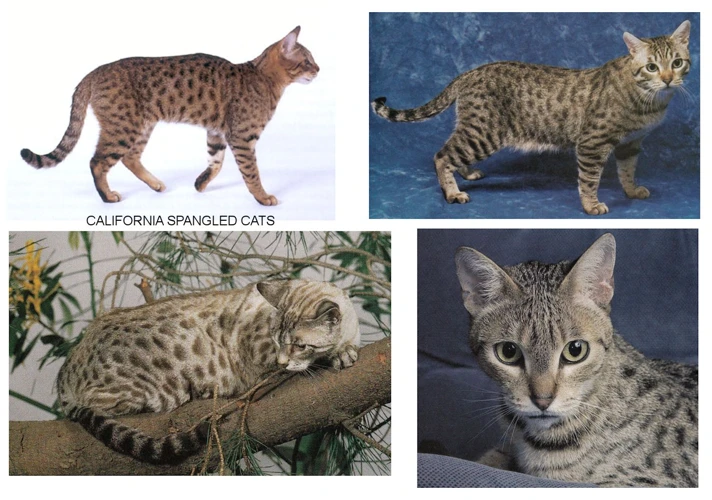
When it comes to preparing your California Spangled cat for breeding, there are several factors to keep in mind. Breeding can be a complex process, and it’s important to ensure the health and safety of both your cat and any potential kittens. Before you start thinking about finding a breeding partner, it’s crucial to make sure your cat is in prime condition for mating. In this section, we’ll explore some essential steps for preparing your California Spangled cat for breeding, including health management, diet, exercise, and setting up your home for kittens. By the end of this section, you’ll be well-equipped to help your cat have a successful breeding season!
Ensure Your Cat is Healthy
Ensuring your California Spangled cat’s health is an essential aspect of preparing it for breeding season, as a healthy cat is more likely to have healthy kittens. Below are some tips on how to keep your cat healthy before breeding:
- Regular vet visits: Make sure to take your cat for regular checkups and vaccinations at least once a year to ensure it’s healthy and up-to-date with its shots. A visit to the vet will also allow the vet to check your cat for any physical health problems that may affect its ability to breed.
- Keep your cat parasite-free: Parasites such as fleas and ticks can lead to health problems for your cat, so it is essential to check your cat for parasites periodically and take appropriate measures to keep them at bay.
- Manage your cat’s weight and diet: Feed your cat a balanced diet that is appropriate for its breed and age to maintain its weight and prevent obesity. Obesity can lead to health issues that may affect your cat’s overall health and ability to breed.
- Oral health: Ensure your California Spangled cat has good oral hygiene by brushing its teeth often or providing dental treats. Poor oral hygiene can cause dental diseases that can affect your cat’s overall health.
- Providing a clean living environment: Ensure that your cat’s litter box is cleaned regularly to prevent infections from bacteria and other contaminants.
Maintaining your California Spangled cat’s health through regular vet visits, proper diet, oral hygiene, and a clean living environment is essential in ensuring that it is in optimal health for breeding season. In addition to these measures, it is also important to keep your cat at its optimal breeding age and consider the genetics of both your cat and its potential partner when breeding. By taking these steps, you can increase the chances of having healthy and successful kittens without any health complications, as well as ensure a stress-free breeding experience for you and your cat.
Consult with Your Veterinarian
Consulting with your veterinarian is an essential step in preparing your California Spangled cat for breeding season. A veterinarian can help ensure that your cat is healthy enough for breeding and provide recommendations for preventing and managing any potential health issues that may arise during the breeding process.
Here are some things to discuss with your veterinarian:
- Health evaluation: Have your veterinarian perform a thorough health evaluation on your California Spangled cat. This includes checking their overall health, testing for any underlying conditions or diseases, and updating any vaccinations. Your cat needs to be in the best possible health before breeding to ensure healthy, viable kittens.
- Reproductive health: Discuss your cat’s reproductive health with your veterinarian. They can help identify any possible issues that may affect the breeding process, including hormonal imbalances, infections, or infestations.
- Breeding schedule: Consult with your veterinarian about the optimal breeding schedule for your California Spangled cat, taking into account their age and overall health. Your veterinarian can also recommend when it’s best to get started with breeding and when to stop.
- Birth preparation: Your veterinarian can also provide information and guidance on how to prepare for your cat’s labor and delivery. This includes discussing the signs of labor, preparing a birthing space, and knowing when to seek emergency assistance if necessary. You can find more information on this topic by clicking on California Spangled Cat Birthing.
- Genetics: If you are new to breeding and the genetics of California Spangled cats, ask your veterinarian for guidance and advice. A good starting point is to learn about the genetics of California Spangled cats. You can find more information on this topic by clicking on Genetics of California Spangled Cats.
Remember, your veterinarian is the best source of information when it comes to the health and reproductive status of your California Spangled cat. Be sure to bring a list of questions to your appointment and be open to their recommendations. With their help, you can feel confident that your cat is ready for the breeding season.
Manage Your Cat’s Diet
When preparing your California Spangled cat for breeding, it’s important to manage their diet to ensure they are getting the proper nutrients and maintaining a healthy weight. Here are some tips for managing your cat’s diet:
| Dietary Needs | Explanation |
|---|---|
| Protein: | California Spangled cats need protein to maintain their lean muscle mass and support their reproductive system during breeding season. Choose high-quality, animal-based protein sources for your cat. |
| Fats: | Fats provide essential fatty acids that support your cat’s skin and coat health. Choose healthy sources of fat, such as fish oil, to include in your cat’s diet. |
| Carbohydrates: | Carbohydrates provide your cat with energy. However, it’s important to choose high-quality, digestible sources of carbohydrates to avoid digestive issues. Look for foods with whole grains or vegetables as the primary carbohydrate source. |
| Vitamins and Minerals: | In addition to protein, fats, and carbohydrates, your cat also needs vitamins and minerals for optimal health. Look for foods that are formulated specifically for cats and meet the AAFCO nutrient guidelines. |
It’s also important to monitor your cat’s weight during breeding season and adjust their diet accordingly. Overweight cats may have difficulty breeding or experience health complications during pregnancy. On the other hand, underweight cats may have difficulty carrying a litter to term. Consult with your veterinarian to determine the appropriate weight range for your cat and adjust their diet as necessary.
In addition to managing their diet, make sure your cat has access to plenty of fresh water at all times. Dehydration can negatively impact the breeding process and pregnancy. Offer water in a bowl or fountain, and make sure to clean and refill it regularly.
By properly managing your cat’s diet, you can help ensure they are healthy and ready for breeding season.
Provide Enough Exercise
It’s important to ensure that your California Spangled cat gets enough exercise in preparation for breeding season. Here are some tips for providing enough physical activity for your feline friend:
| Activity | Description |
| Interactive Playtime | Invest in some interactive toys such as feather wands or laser pointers that you can use to play with your cat. This not only provides exercise for your cat but also strengthens the bond between you and your cat. |
| Scratching Posts | Provide your cat with a scratching post to satisfy its natural urge to scratch. This also helps to keep its claws in good condition for mating. |
| Vertical Spaces | Cats love climbing and exploring vertical spaces. Invest in vertical cat trees or install shelves for your cat to climb on. This provides exercise as well as mental stimulation. |
| Outdoor Enclosure | If possible, provide your cat with access to an outdoor enclosure where it can run, climb, and explore safely. This is a great way to provide exercise and fresh air for your cat. |
Remember to gradually increase the amount of exercise your cat gets to avoid injury or exhaustion. You should also monitor your cat’s behavior during playtime and stop if it seems overly tired or agitated. With enough exercise, your California Spangled cat will be healthy and ready for breeding season.
Get Your Home Ready for Kittens
Preparing for kittens can be an exciting but also overwhelming experience for pet owners. It’s important to make sure your home is ready for the new arrivals. Here are some tips to help you get your home ready for your California Spangled cat’s kittens:
| Tip | Description |
|---|---|
| Designate a Safe Area | Prepare a designated area, like a quiet room or a comfortable box, where the mother and kittens can stay. Make sure there are no hazards like cords, sharp objects, or toxins in the area. |
| Keep Your Home Clean | Make sure to clean your house regularly, especially the area around the kittens. Keep the litter box clean, and wash all bedding and toys frequently. |
| Set Up a Comfortable Bedding | Provide comfortable and soft bedding for the mother and kittens to sleep on. This can include blankets, towels, or a special cat bed. |
| Buy Essential Supplies | Make sure you have enough kitten food, water and food bowls, litter, and towels. It’s also important to have a scale, thermometer, and other basic medical supplies on hand in case of emergencies. |
| Protect Your Furniture | Kittens may scratch furniture, so consider investing in scratching posts or pads to divert their attention. Also, protect furniture by placing washable covers over it or training kittens with toys and treats. |
By following these simple tips, you can ensure that your home is equipped and safe for the kittens, and your California Spangled cat feels comfortable in her new role as a mother.
Choosing a Breeding Partner for Your California Spangled Cat
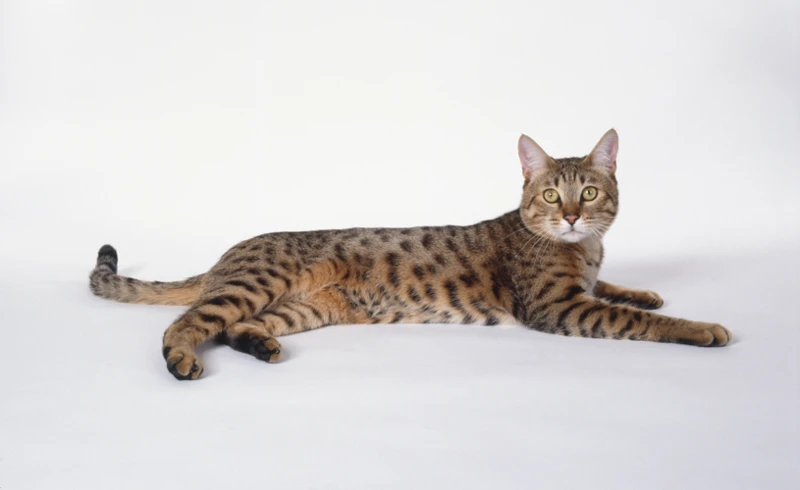
As a California Spangled cat owner, choosing the right breeding partner for your feline can be a daunting task. It’s essential to make sure the mate has the right characteristics and genetics to ensure the health and wellbeing of both the mother and the kittens. Considering the vast number of breeders and potential partners available, it can be perplexing to know where to start. In this section, we will explore some factors to consider when selecting a breeding partner for your beloved California Spangled cat, and how to ensure a healthy and successful mating process.
Find a Reputable Breeder
When it comes to breeding your California Spangled Cat, finding a reputable breeder should be the top priority. Here are some tips to help you find a breeder that is trustworthy and responsible:
- Research: Look for breeders online and read reviews from other customers. Check if they are registered with a recognized cat association, such as the Cat Fanciers’ Association (CFA) or The International Cat Association (TICA).
- Visit: If possible, visit the breeder’s cattery to see the living conditions of their cats and how they are cared for. This can give you a good idea of the breeder’s standards and ethics.
- Ask Questions: Don’t be afraid to ask the breeder questions about their breeding practices, such as how often they breed their cats, how they care for the kittens, and what kind of genetic testing they do to ensure the kittens’ health.
- Check Health: A reputable breeder will always prioritize the health of their cats, so make sure to ask for health certificates and records of the parents’ genetic testing.
- Contracts: A responsible breeder will always provide a contract that outlines the terms of the sale, including any health guarantees and what happens if the kitten doesn’t meet your expectations.
- Follow-up: A good breeder will always be interested in the well-being of their kittens. They may ask you to keep in touch and provide updates on the kitten’s progress after they leave their cattery.
By following these tips, you can be assured that you are working with a reputable and ethical breeder who prioritizes the health and well-being of their cats. Remember that breeding is a big responsibility, and working with a trustworthy breeder can ensure that your California Spangled Cat has the best possible chance of producing healthy, happy kittens.
Consider Your Cat’s Characteristics
Choosing a breeding partner for your California Spangled cat is an important decision, and it’s crucial to consider your cat’s characteristics when making this choice. Understanding your cat’s physical traits, personality, and health history can help you choose a partner that will complement your cat’s strengths and minimize any potential weaknesses.
Consider the following characteristics when selecting a breeding partner for your California Spangled:
| Trait | Consideration |
|---|---|
| Physical appearance | Look for a partner that has physical traits that complement your cat. For example, if you have a male California Spangled with strong, muscular features, you may want to choose a female with a similar build. |
| Temperament | Consider the temperament of your California Spangled and look for a partner with a compatible personality. If your cat is shy or skittish, you may want to choose a partner that is calm and affectionate. |
| Health history | It’s important to choose a partner with a clean bill of health to minimize the risk of genetic health problems. Be sure to ask for health certificates and ensure the breeder has performed all relevant health tests. |
| Breeding experience | Consider the experience level of the breeder and ask for references from previous clients. Working with a reputable breeder with a proven track record can help ensure a successful breeding outcome. |
Keep in mind that choosing the right breeding partner for your California Spangled cat involves more than just physical appearance. It’s important to evaluate all potential partners carefully to ensure your cat’s health and well-being. By considering these factors, you can increase your chances of a successful and healthy litter of kittens.
Introducing Your Cat to the Breeding Partner
When choosing a breeding partner for your California Spangled cat, it is important to introduce them properly to ensure a successful mating process. Here are some tips for introducing your cat to their breeding partner:
1. Start with Scent: Before meeting in person, it is useful to introduce your cat to the scent of their potential partner. Swap blankets or toys between their living spaces, or use a cloth to gently rub the scent of one onto the other.
2. Neutral Territory: It is best to introduce the cats on neutral territory, away from their usual living spaces. This can be a separate room or an outdoor enclosure. Make sure the area is clean and free of any potential hazards.
3. Supervise the Introduction: It is important to supervise the initial introduction to ensure that both cats feel safe and comfortable. This can be done by keeping them on opposite sides of the room and gradually moving them closer together over time.
4. Watch for Signs of Aggression: Monitor both cats’ behavior during the introduction process. Signs of aggression, such as growling or hissing, should be taken seriously. If either cat becomes aggressive, separate them immediately and try again at a later time.
5. End on a Positive Note: End the introduction process on a positive note by rewarding both cats with treats or playtime. This will help to reinforce positive associations between them.
Introducing your cat to a breeding partner may take time and patience but it is an important step to ensure a successful mating process. By following these tips, you can help your California Spangled cat form a positive relationship with their partner.
Caring for Your California Spangled Cat During Breeding
Breeding season can be an exciting time for California Spangled cats and their owners. However, it’s important to remember that caring for your cat during this time involves more than just selecting the right breeding partner. As a responsible cat owner, you will need to provide a safe environment for your cat, monitor their health and behavior closely, and be prepared for any potential complications that may arise during the mating process. In this section, we will discuss the various steps you can take to ensure that your California Spangled cat stays healthy and comfortable during the breeding season.
Provide a Safe Environment
When it comes to breeding your California Spangled cat, it’s essential to provide a safe environment for them. This includes both physical safety and psychological well-being. Here are some tips to help you create a secure environment for your cat during the breeding process.
| Tip | Description |
|---|---|
| Separate living spaces | Make sure to separate your cat from other animals in your home during breeding. This can help reduce stress and avoid territorial conflicts. |
| Provide cozy hiding places | Your cat may feel stressed during the breeding season, so it’s important to provide them with cozy hiding places where they can retreat if they are feeling anxiety. |
| Keep the environment calm and quiet | Loud noises and excess activity may stress your cat, so it’s best to keep the environment as calm and quiet as possible. |
| Remove any potential hazards | Make sure to remove any potential hazards in the environment. This includes things like dangling cords, breakable items, chemicals that are harmful to pets, and sharp objects. |
| Ensure proper ventilation | Proper ventilation is important to maintaining a healthy environment for your cat. Make sure that the windows are open and that there’s plenty of fresh air circulating. |
By ensuring that your cat has a safe environment during breeding, you can help reduce their stress levels and minimize the risk of accidents or injuries. Remember, a happy and healthy cat is a happy and contented breeder.
Monitor Your Cat’s Health and Behavior
It is essential to monitor your California Spangled cat’s health and behavior during breeding. Here are some tips on what to look for:
- Physical Symptoms: As you monitor your cat, keep an eye out for physical symptoms such as lethargy, loss of appetite, and vomiting. These symptoms could indicate a potential health problem that could affect the outcome of the breeding process.
- Changes in Behavior: Your cat may experience changes in behavior when in heat or during the breeding process. These changes can include increased vocalization, aggression, and heightened activity levels. It is important to keep an eye on your cat’s behavior and intervene if any concerning behaviors arise.
- Mating Success: It is important to monitor the mating process to ensure that it is successful. Look for signs of successful mating, such as the cat’s acceptance of the breeding partner and completion of the mating process.
- Complications: Unfortunately, complications can arise during the breeding process. Keep an eye out for any signs of complications such as bleeding, difficulty breathing, or seizures. If your cat experiences any of these symptoms, seek veterinary care immediately.
Remember to always prioritize your cat’s health and well-being during the breeding process. By monitoring your cat’s health and behavior, you can ensure a safe and successful breeding process for both your cat and her kittens.
Manage the Mating Process
During the mating process, it is important to carefully manage your California Spangled cat to ensure a successful breeding. Here are some tips on how to manage the mating process:
1. Observe Your Cat’s Behavior: Before introducing your cat to the breeding partner, it is important to observe your cat’s behavior and determine if she is ready for mating. Look for signals like vocalization, increased affection, and rubbing against objects. If you notice these behaviors, it’s a good indication that your cat is in heat and ready to mate.
2. Introduce the Breeding Partner: When you are confident that your cat is ready for mating, it’s time to introduce the breeding partner. Choose a quiet and familiar location for the introduction, and closely supervise the initial interactions between the cats. If you notice any aggressive or unusual behavior, separate the cats and try again later.
3. Allow Time for Mating: Once the cats are comfortable with each other, give them enough time to mate. It is important to let the process happen naturally, without interrupting or interfering. After mating, it is important to separate the cats to prevent any post-mating aggression.
4. Monitor Your Cat’s Health: During and after the mating process, it is important to closely monitor your cat’s health. Look out for any signs of discomfort, pain, or distress. If you notice anything out of the ordinary, it’s best to consult your veterinarian.
5. Provide Post-Mating Care: After mating, your cat will still need proper care and attention. Make sure to provide your cat with plenty of rest and a healthy diet, and ensure that she has access to clean water at all times.
Here’s a table summarizing the tips for managing the mating process:
| Tip | Description |
|---|---|
| Observe Your Cat’s Behavior | Look for signals that your cat is ready for mating, such as vocalization and increased affection. |
| Introduce the Breeding Partner | Choose a quiet and familiar location, and closely supervise the initial interactions between the cats. |
| Allow Time for Mating | Give the cats enough time to mate naturally, without interrupting or interfering. |
| Monitor Your Cat’s Health | Closely monitor your cat’s health during and after the mating process, and look out for any signs of discomfort, pain, or distress. |
| Provide Post-Mating Care | Ensure that your cat gets plenty of rest and a healthy diet, and has access to clean water at all times. |
Be Prepared for Any Complications
Breeding your California Spangled Cat is not without risks. While most cats mate without incident, occasionally complications can arise. As a responsible cat breeder, it is essential to be prepared for any problems that may occur during the breeding process. Here are some potential complications and how to be ready for them:
- Injury during mating: Even though cats are usually gentle when mating, it is possible for one of them to get injured during the process. Common injuries include scratches, bites, and pulled muscles. Always supervise the mating process and be ready to intervene if necessary.
- Failure to conceive: If your cat does not become pregnant after mating, it could be due to various reasons. Sometimes it’s due to uncaught infections, ovulation occurring later than expected, or poor breeding. Make sure to do your research on breeding, be patient, and do not hesitate to consult with your veterinarian.
- Complications during pregnancy: Occasionally, pregnancy can come with its own set of complications. Your cat may develop illnesses like feline herpesvirus, which can harm the mother and her future kittens. Your cat may also experience complications during labor or give birth to stillborn kittens. It is crucial to have a plan ready with your veterinarian in case any of these issues arise.
- Dystocia: If your cat has a difficult delivery, it could be due to dystocia, a problem during labor. This can occur when the fetus is too big to pass through the birth canal, or parts of the fetus become lodged. The signs of dystocia include a lack of progress during labor or heavy bleeding. It is essential to closely monitor the delivery and be familiar with the signs and procedures to prevent any harm to the cat and its kittens.
By understanding these potential problems, you can be prepared for any complications that may arise during the breeding season. Ensure that you have the necessary equipment on hand or know where to source it quickly in case of emergencies. Most importantly, have a plan in place and consult with your veterinarian to minimize the risks and ensure the health and safety of your California Spangled Cat and its offspring.
Conclusion
In conclusion, preparing your California Spangled cat for the breeding season can seem like a daunting task, but with the right care and attention, it can be a rewarding experience for both you and your feline companion.
It is important to understand the breeding season for your cat and the behaviors and expectations that come with it. By ensuring your cat is healthy and consulting with your veterinarian, you can prepare your cat for breeding and manage their diet and exercise to keep them in optimal condition.
When choosing a breeding partner for your cat, it is important to find a reputable breeder and consider your cat’s characteristics. Introducing your cat to the breeding partner should be done with patience and care.
During the breeding process, provide a safe environment for your cat and monitor their health and behavior closely. Managing the mating process and being prepared for any complications can help ensure a successful breeding experience.
Remember to always prioritize the well-being of your cat and seek professional advice if necessary. By following these tips and tricks, you can prepare your California Spangled cat for the breeding season and set them up for a healthy and happy future.
Frequently Asked Questions
1. Can a California Spangled Cat breed with other breeds?
Yes, California Spangled Cats can breed with other breeds, but it is recommended to breed them with cats of the same breed to maintain the breed’s characteristics.
2. How long does the breeding season last for California Spangled Cats?
The breeding season for California Spangled Cats usually lasts from January to September.
3. What is the ideal age to breed a California Spangled Cat?
The ideal age to breed a California Spangled Cat is between 1 and 5 years old.
4. Do I need to get my California Spangled Cat vaccinated before breeding?
Yes, it is essential to get your California Spangled Cat vaccinated before breeding to ensure that they and their offspring are healthy.
5. What should I feed my California Spangled Cat during the breeding season?
You should provide your California Spangled Cat with a balanced diet that includes high-quality protein and essential nutrients to support their reproductive health.
6. How do I choose a suitable breeding partner for my California Spangled Cat?
You should find a reputable breeder and consider your cat’s characteristics, including their temperament and health history.
7. Is it safe for my California Spangled Cat to breed naturally or should I opt for artificial insemination?
Your California Spangled Cat can breed naturally, but it is recommended to consult with your veterinarian to determine if artificial insemination is necessary.
8. Can I breed my male California Spangled Cat with multiple female cats at once?
Yes, male California Spangled Cats can mate with multiple females, but it is important to monitor their behavior and ensure that they are not overworked.
9. What should I do if my California Spangled Cat experiences complications during birth?
You should seek immediate veterinary assistance if your California Spangled Cat experiences complications during birth to ensure the safety of your cat and their offspring.
10. How many litters can a California Spangled Cat have in a year?
A California Spangled Cat can have up to three litters in a year, but it is recommended to limit breeding to two or fewer litters a year to avoid health complications.

